Obs de quintal - backyard observations - Polistes
Vespas são mal compreendidas e muito odiadas. Poucas pessoas entendem seu papel indiscutivelmente importante nos ecossistemas, suas relações ecológicas com outros insetos, aranhas e plantas. Como o ovipositor foi modificado em um ferrão, o que pode resultar em uma picada dolorosa, as vespas de papel Polistes são muito temidas pelos seres humanos, mas só serão agressivas se sentirem que seus ninhos estão ameaçados. Vou falar sobre a vespa de papel Polistes - Vespidae- Maribondo-Caboclo, bastante comum no Brasil.
Translator
Wasps are poorly understood and very much hated. Few people understand their indisputably important role in ecosystems, their ecological relationships with other insects, spiders and plants. As the ovipositor has been modified into a stinger, which can result in a painful sting, the Polistes paper wasps are highly feared by humans, but will only be aggressive if they feel that their nests are threatened. I will talk about the paper wasp Polistes - Vespidae - Maribondo-Caboclo, quite common in Brazil.
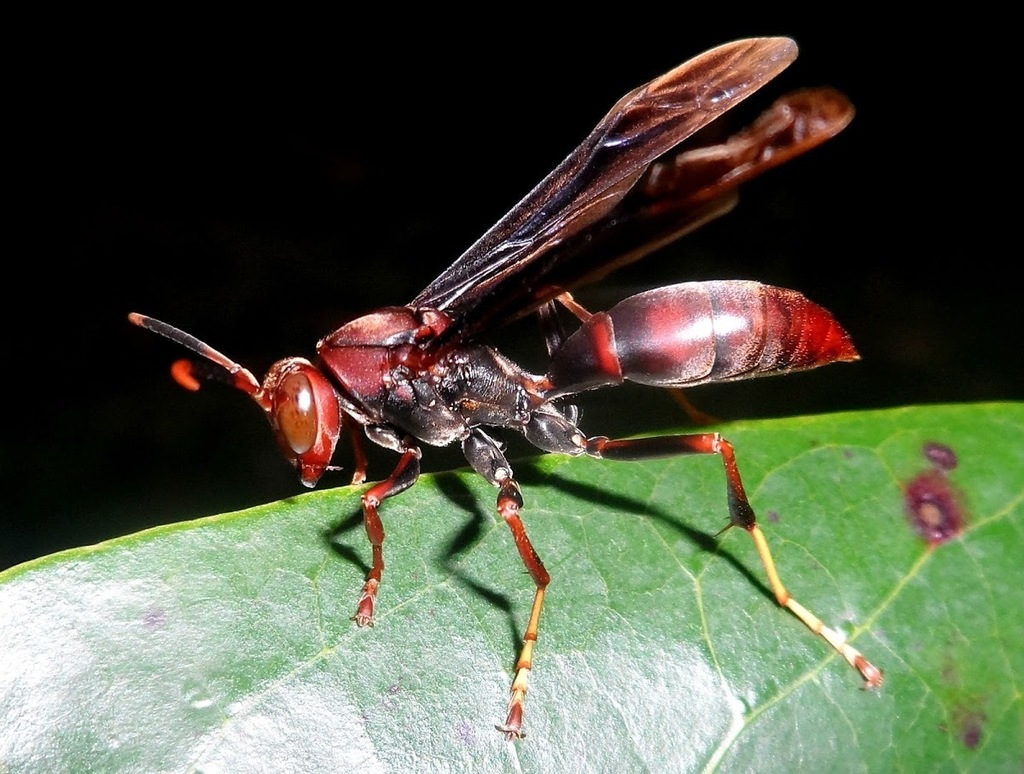
Praticamente sinantrópicas, podendo voar muito próximo aos humanos, e até usar nossos prendedores de roupa como matéria prima para seus ninhos. São fabricantes de papel especializadas, capazes de transformar madeira bruta em ninhos de papel resistentes. O ninho é aberto e tem o formato de um guarda-chuva invertido. É construído acima do solo e pode ser encontrado pendurado em beirais, tetos de garagem, cercas, sótãos de casas e outras áreas protegidas.
Translator
Practically synanthropic, being able to fly very close to humans, and even use our clothespins as raw material for their nests. They are specialized paper manufacturers, capable of transforming raw wood into resistant paper nests. The nest is open and shaped like an inverted umbrella. It is built above the ground and can be found hanging over eaves, garage ceilings, fences, attics and other protected areas.
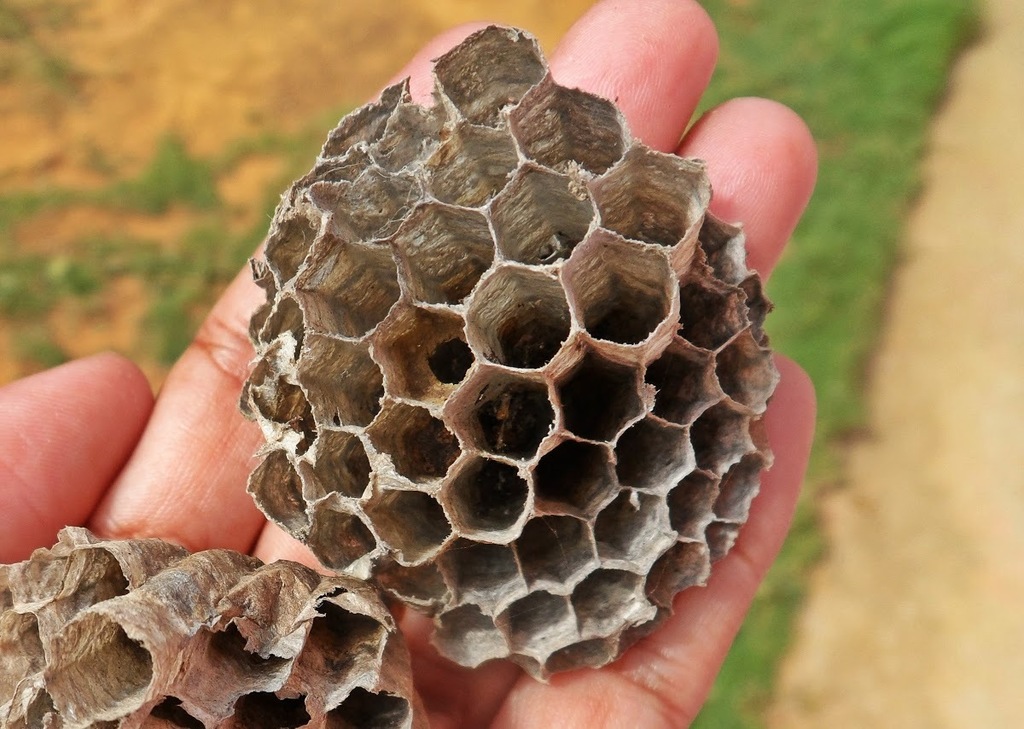
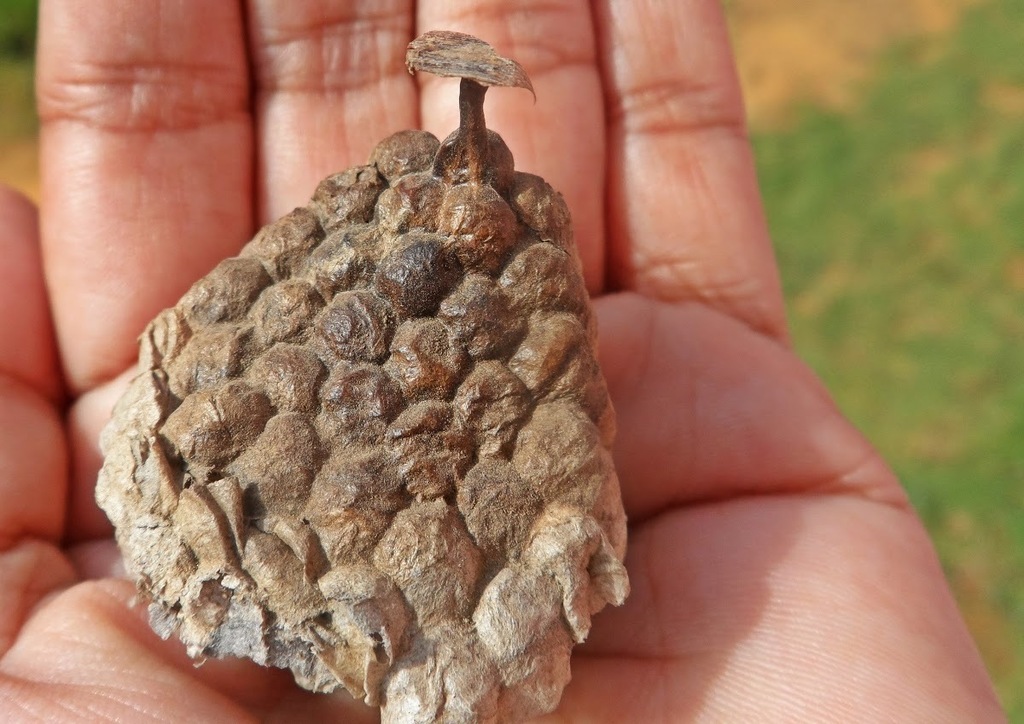
A construção do ninho começa com um suporte adequado - numa janela, por exemplo. A rainha acrescenta sua polpa ao suporte. À medida que as fibras de celulose úmidas secam, elas se tornam um forte filamento de papel, por onde o ninho fica suspenso. O material do ninho é constituído por uma mistura de madeira mastigada e pelas secreções salivares das vespas fêmeas. O ninho pode ser iniciado por uma vespa rainha acasalada que constrói um pequeno número de células e nas quais ela deposita um ovo. Uma rainha usa suas mandíbulas p/ raspar pedaços de fibra de madeira de cercas, troncos ou até papelão. Ela então quebra as fibras de madeira na boca, usando saliva e água para enfraquecê-las. A vespa voa para o local do ninho escolhido com a boca cheia de polpa de papel macio.
Translator
The construction of the nest begins with a suitable support - in a window, for example. The queen adds her pulp to the stand. As the wet cellulose fibers dry, they become a strong paper filament, where the nest is suspended. The nest material consists of a mixture of chewed wood and the salivary secretions of female wasps. The nest can be started by a mated queen wasp that builds a small number of cells and in which it lays an egg. A queen uses her jaws to scrape pieces of wood fiber from fences, logs or even cardboard. She then breaks the wood fibers in her mouth, using saliva and water to weaken them. The wasp flies to the chosen nest site with its mouth full of soft paper pulp.
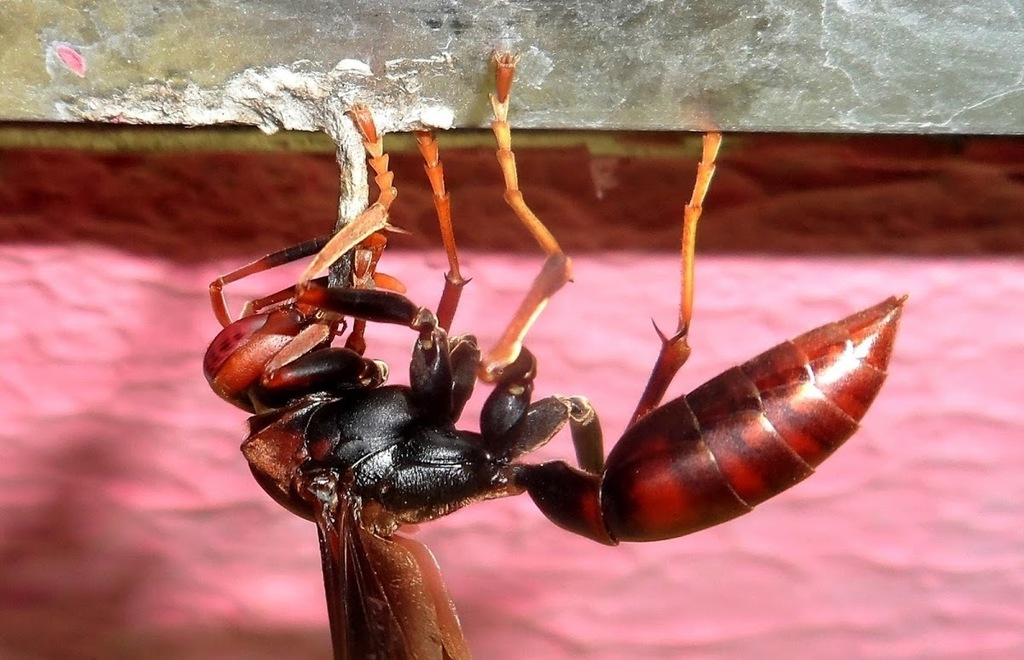
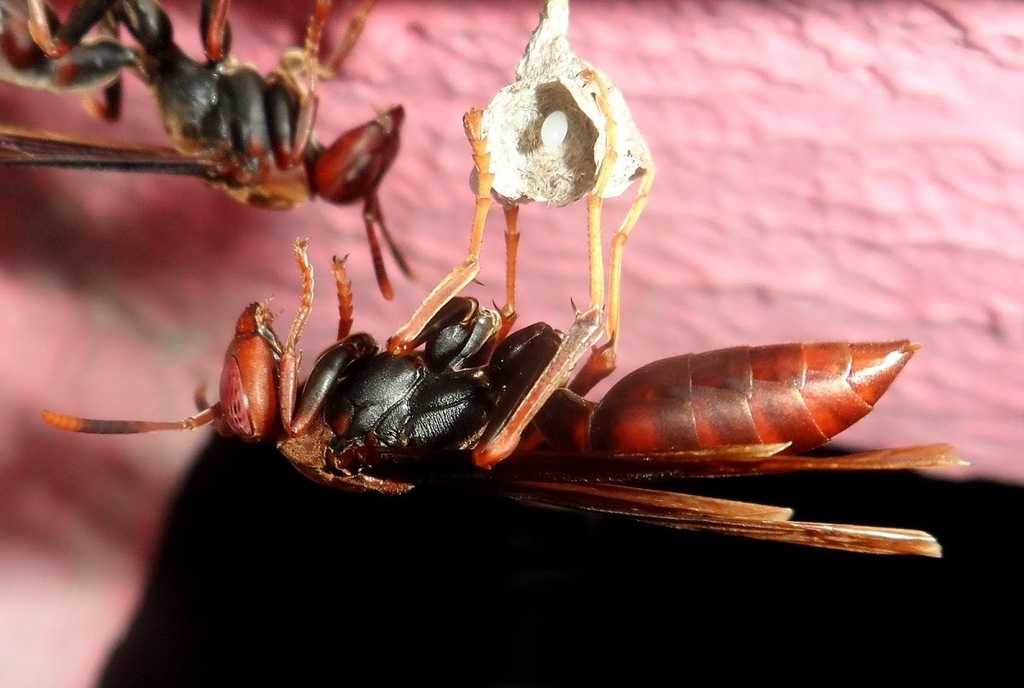
Os ovos eclodem e as larvas emergentes continuarão a se desenvolver e crescer dentro da célula. A rainha buscará comida fora do ninho e trará de volta a comida para as larvas em crescimento até o momento da pupação. Todos os adultos emergentes serão mulheres trabalhadoras com órgãos reprodutivos não desenvolvidos. Essas novas trabalhadoras assumirão a responsabilidade de alimentar todas as outras larvas e construir mais o ninho, enquanto a rainha dedicará todo o seu tempo à postura dos ovos
Translator
The eggs hatch and the emerging larvae will continue to develop and grow within the cell. The queen will fetch food outside the nest and bring the food back to the growing larvae until pupation. All emerging adults will be working women with undeveloped reproductive organs. These new workers will take on the responsibility of feeding all other larvae and building the nest more, while the queen will devote all her time to laying eggs
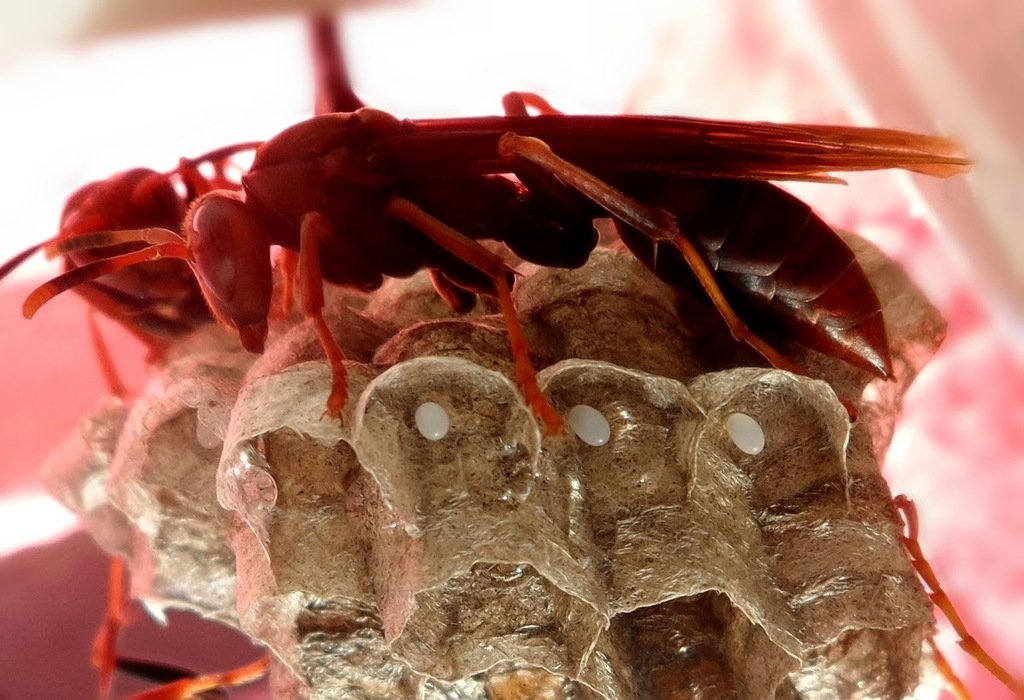
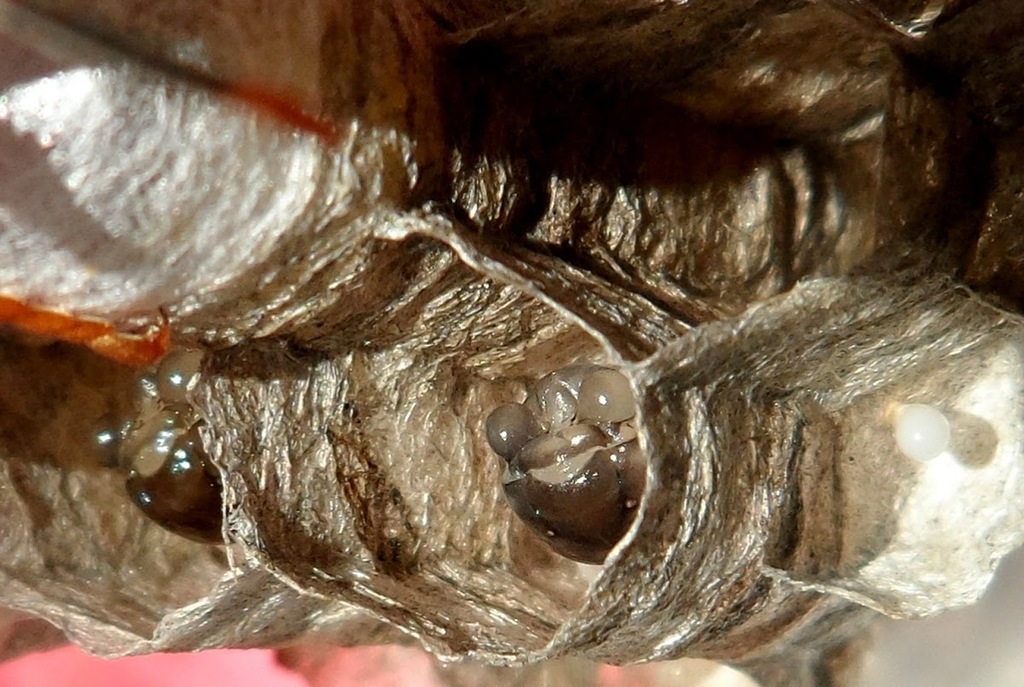
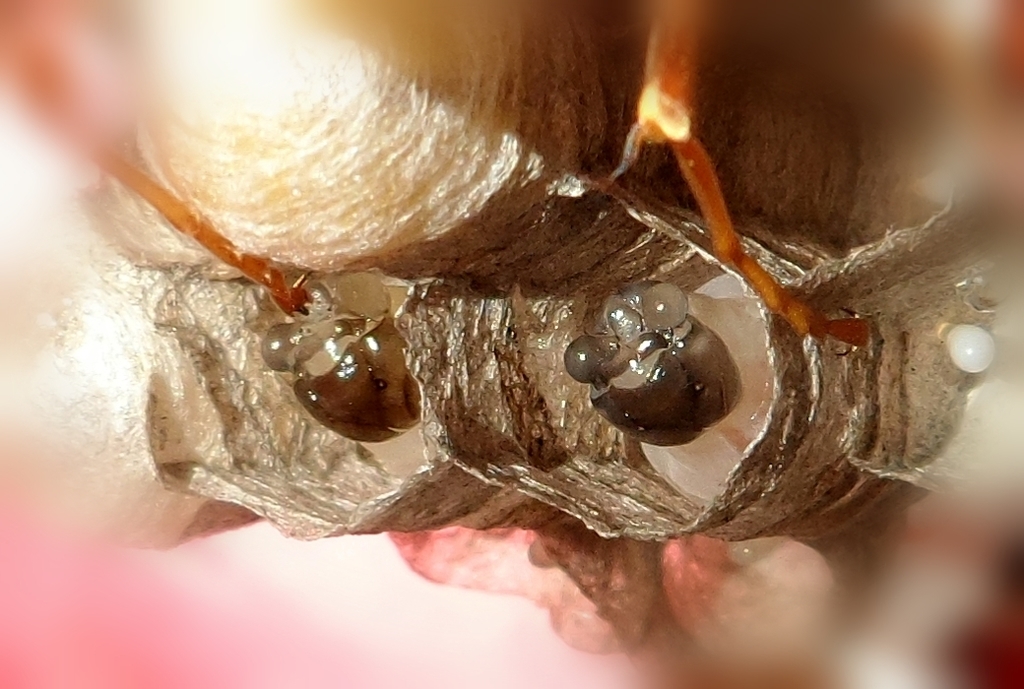
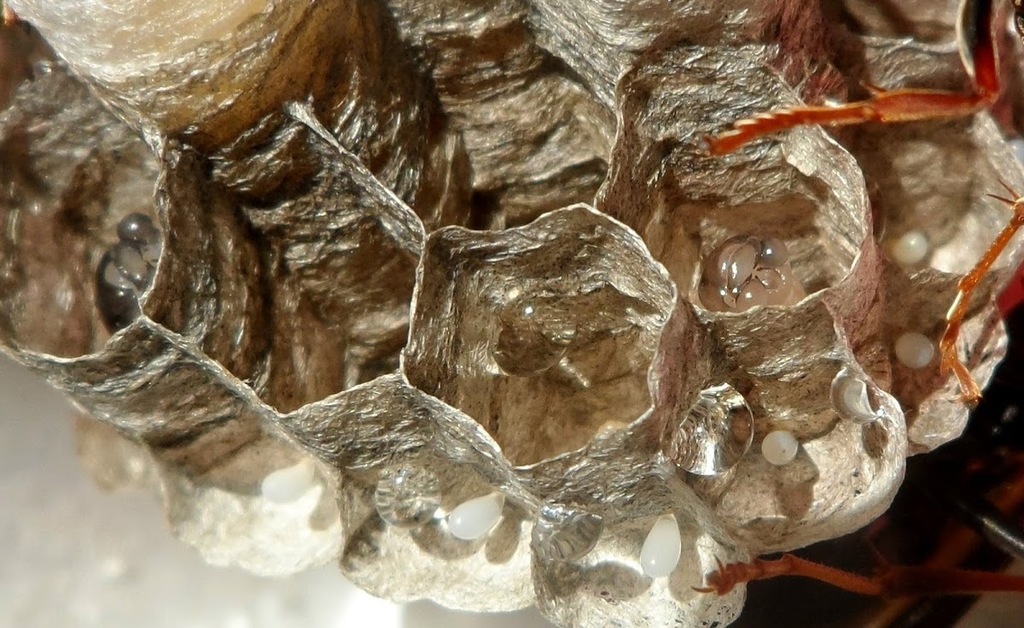
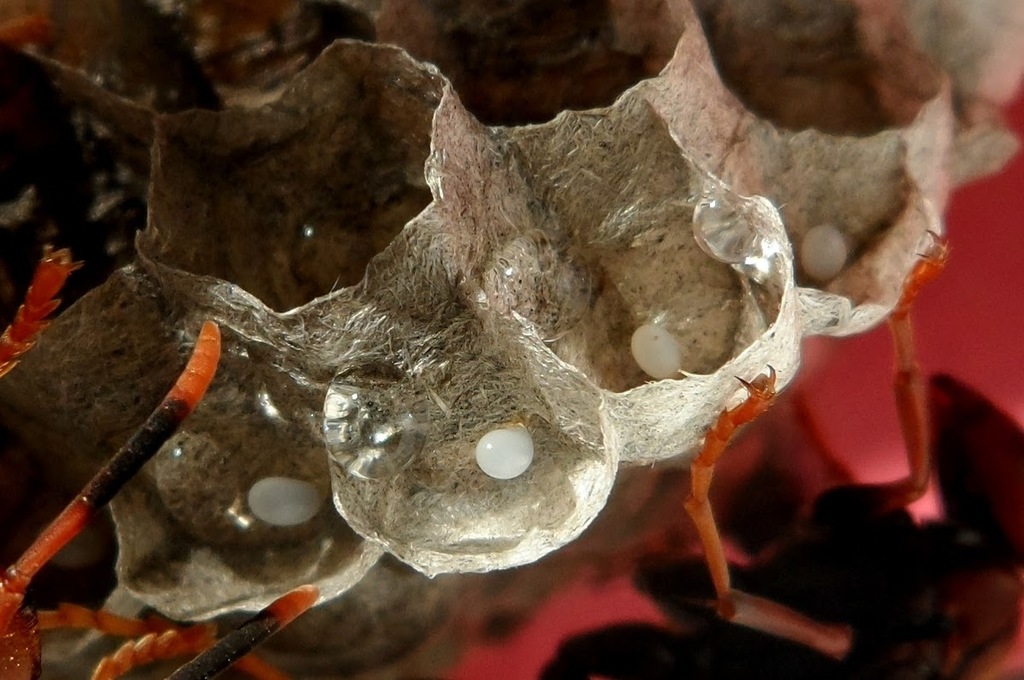
Os ninhos raramente excedem 200 insetos. A duração de uma colônia pode durar aproximadamente seis a sete meses e depende principalmente da capacidade reprodutiva da rainha. Presume-se que os ovos eclodem em cerca de duas semanas. Gordura retirada de insetos e néctar vão alimentar as larvas em progresso. Essas larvas se transformam em adultos em cerca de dois meses a partir da época da postura dos ovos.
Translator
The nests rarely exceed 200 insects. The duration of a colony can last approximately six to seven months and depends mainly on the reproductive capacity of the queen. Eggs are presumed to hatch in about two weeks. Fat removed from insects and nectar will feed the larvae in progress. These larvae become adults in about two months from the time of egg laying.
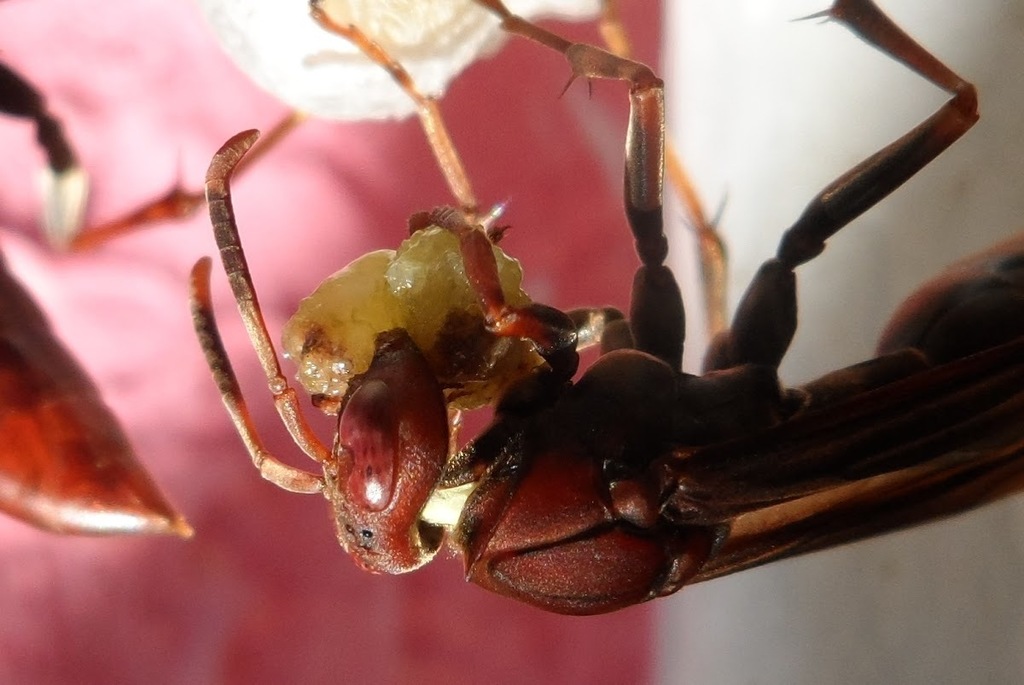

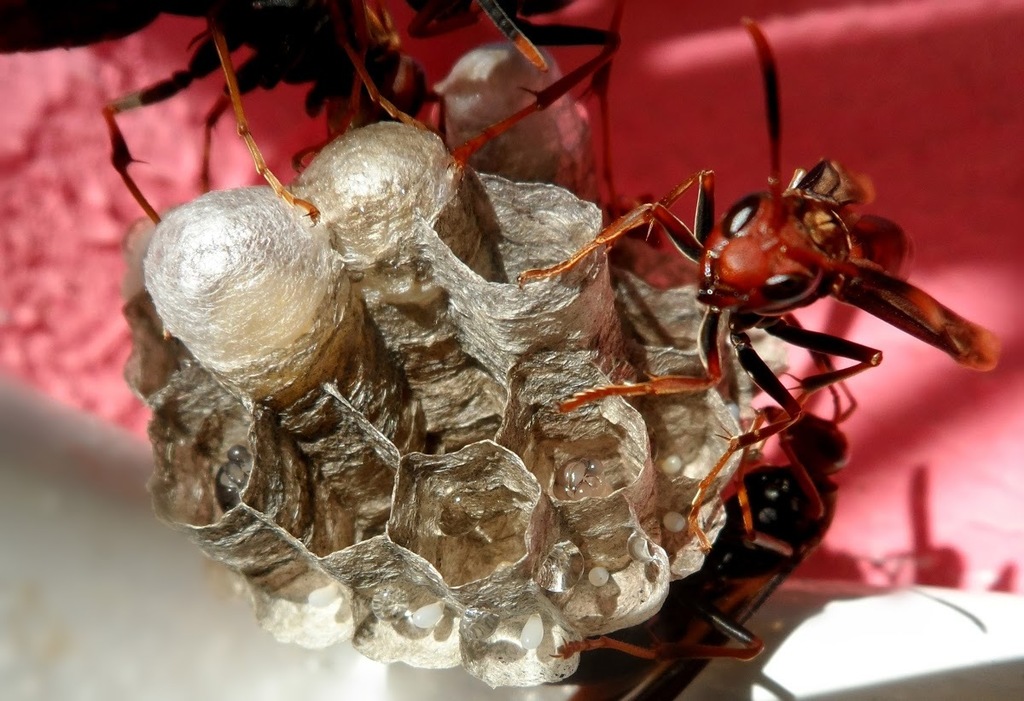
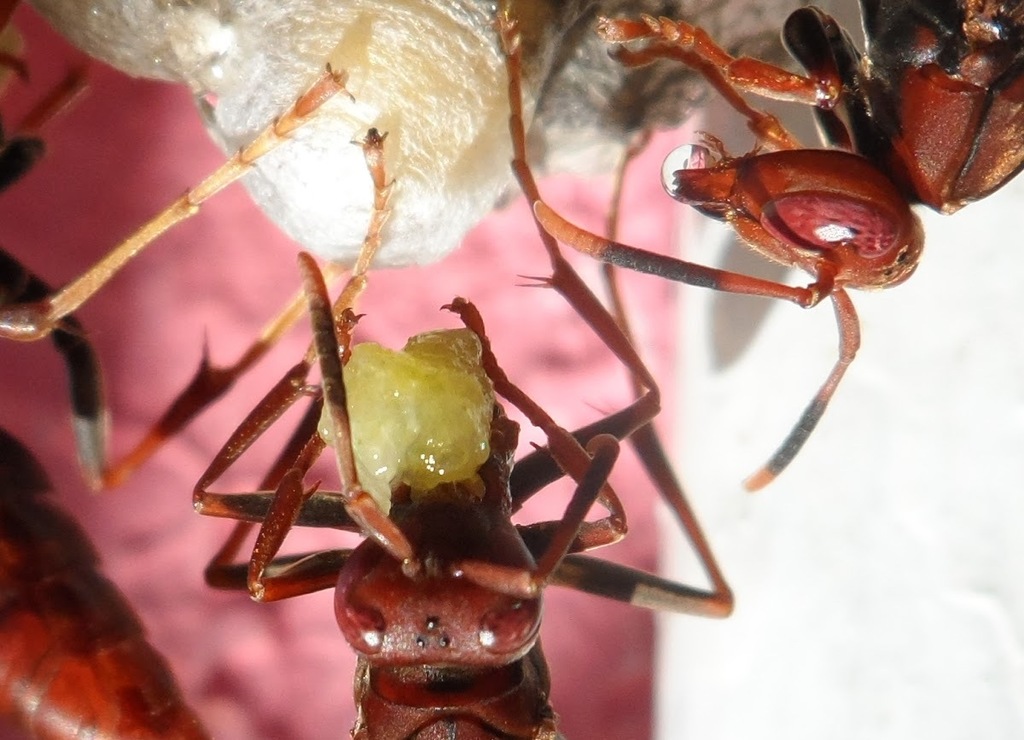
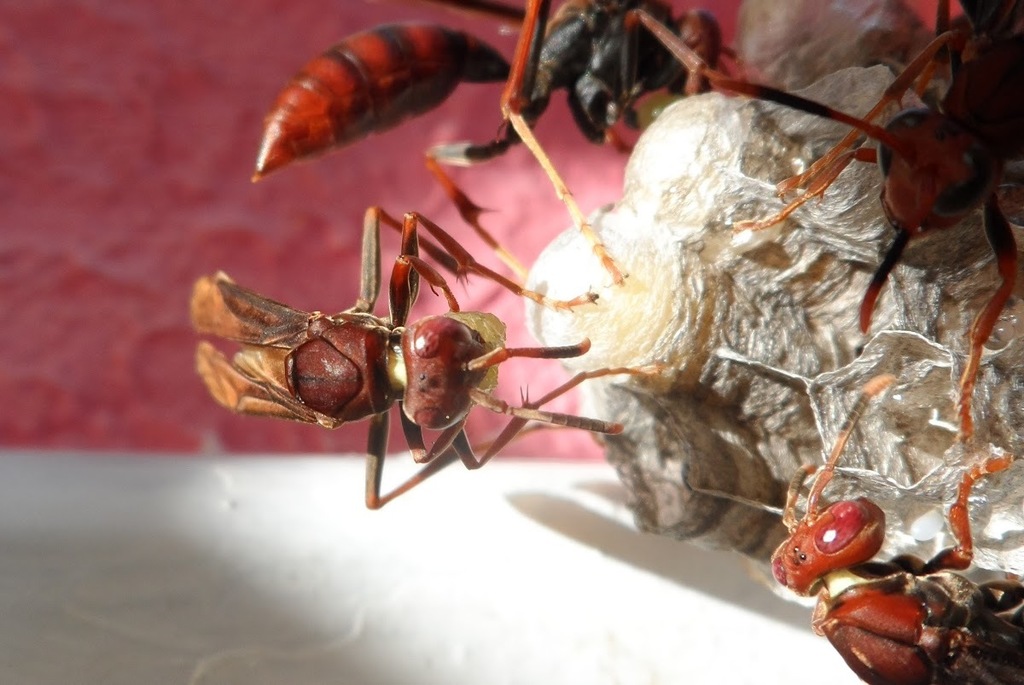
Estas vespas podem rasgar lagartas com precisão, desprezando intestino e pele, e fazendo uma pequena bola com a gordura que ela retira para alimentar as larvas no ninho. Rainhas e operárias podem executar a tarefa de forrageamento: procurar alimentos para as larvas. Tanto a rainha quanto operárias mastigam alimento trazido pelas forrageadoras. O macerado é dividido com as companheiras, que depois alimentam cada larva.
Translator
These wasps can tear caterpillars accurately, neglecting intestines and skin, and making a small ball with the fat it removes to feed the larvae in the nest. Queens and workers can perform the foraging task: look for food for the larvae. Both the queen and the workers chew food brought by the foragers. The macerate is divided with the companions, who then feed each larva.

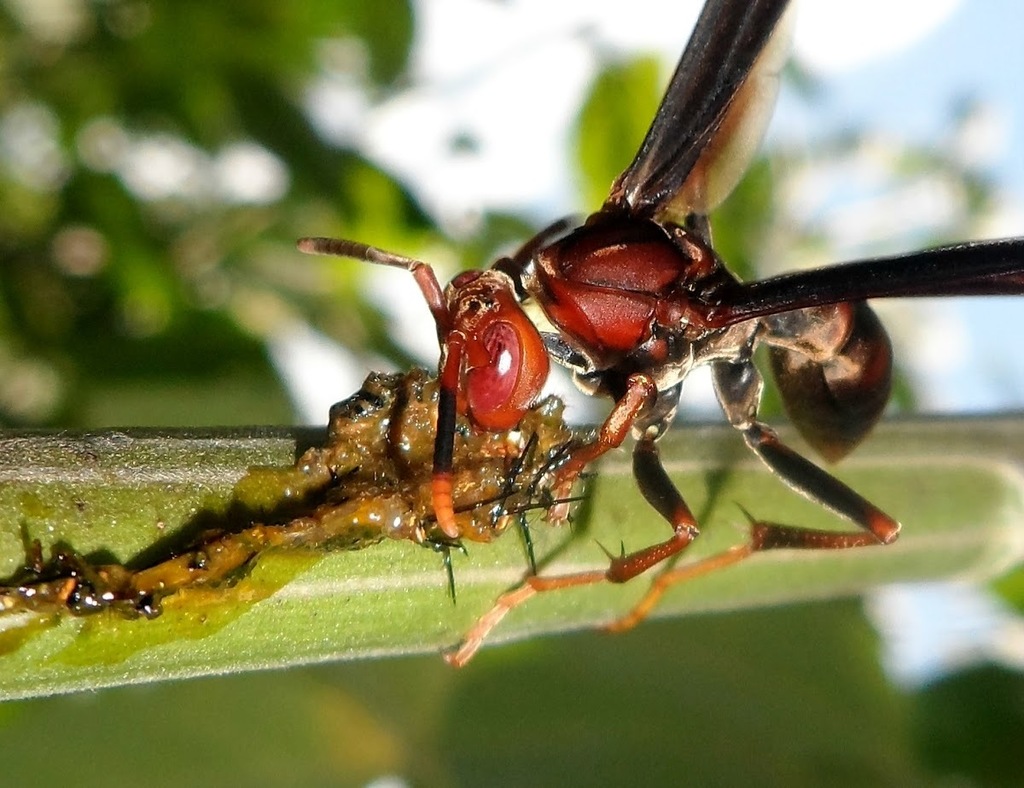
Estas vespas podem jogar para fora do ninho larvas com problemas, como lesões nas mandíbulas. Ou alimentar as larvas mais prosperas com as próprias larvas no ninho. Sinal de aviso Caso seja alarmada está vespa pode liberar odor forte em seu ninho; o odor do veneno desencadeia respostas de alarme em suas companheiras. Melhor não se aproximar nem mexer nos ninhos.
Translator
These wasps can throw larvae out of the nest with problems, such as lesions in the jaws. Or feed the most successful larvae with the larvae themselves in the nest. Warning sign If the wasp is alarmed, it can release a strong odor in its nest; the odor of the poison triggers alarm responses in its companions. Better not to approach or touch the nests
Adicionais: Pupa e larva que foram retiradas de ninho derrubado por humanos.
Additional: Pupa and larva that were removed from a nest dropped by humans.
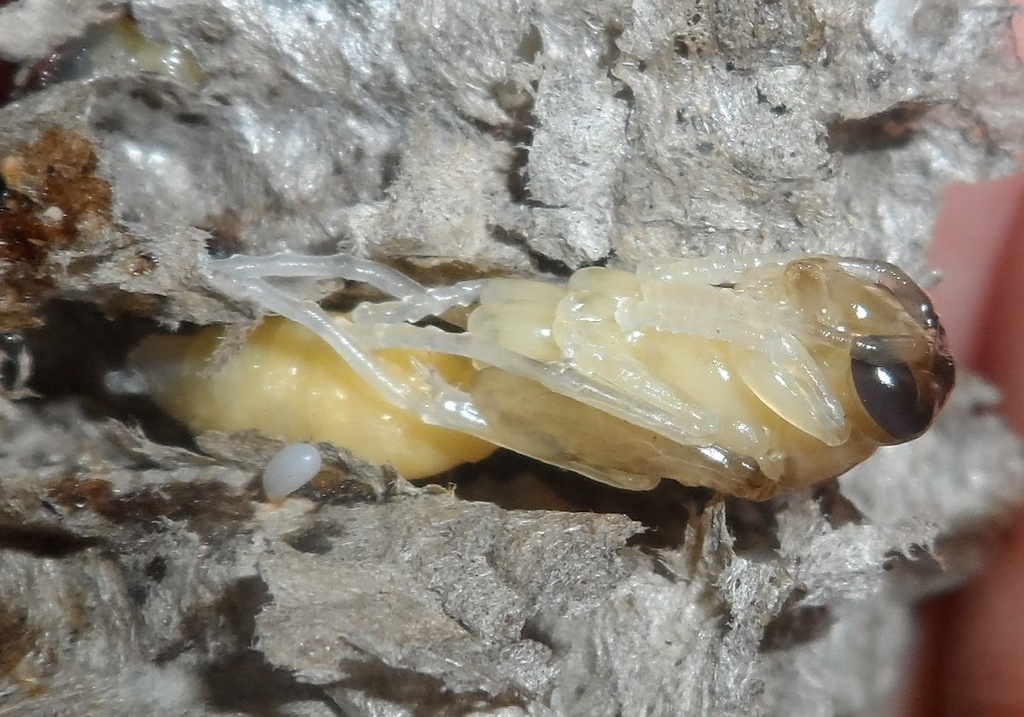
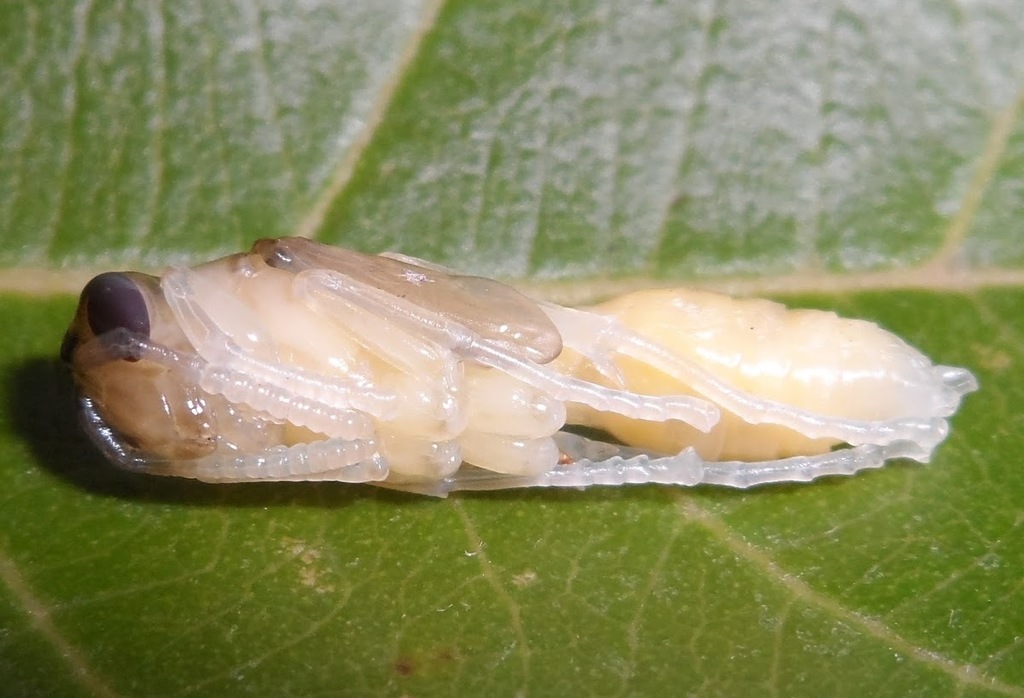
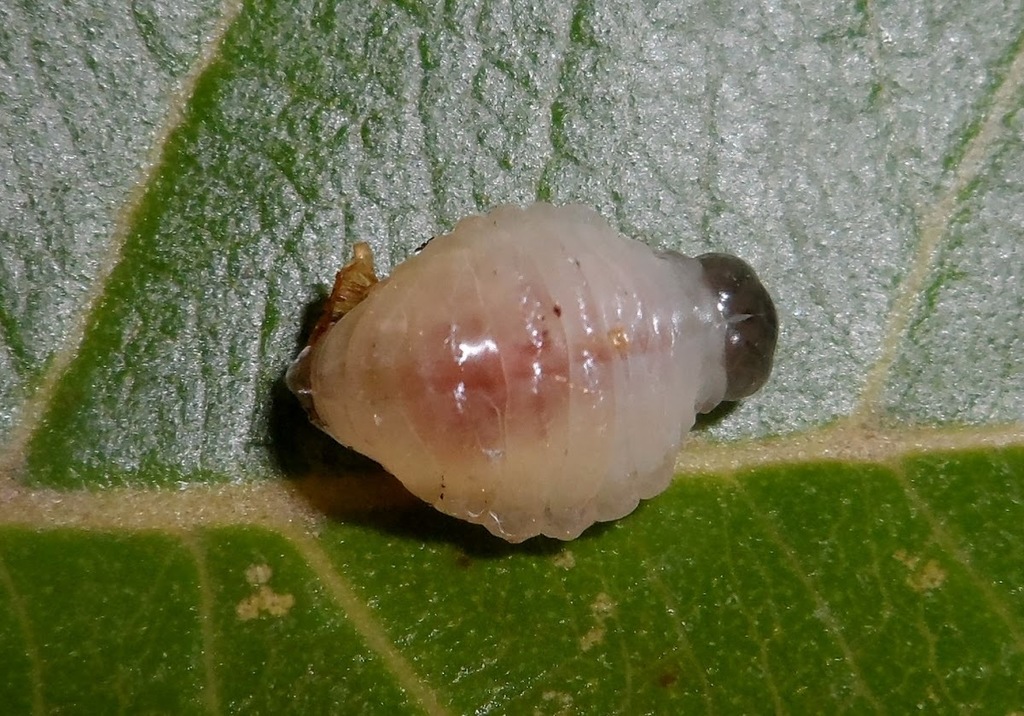
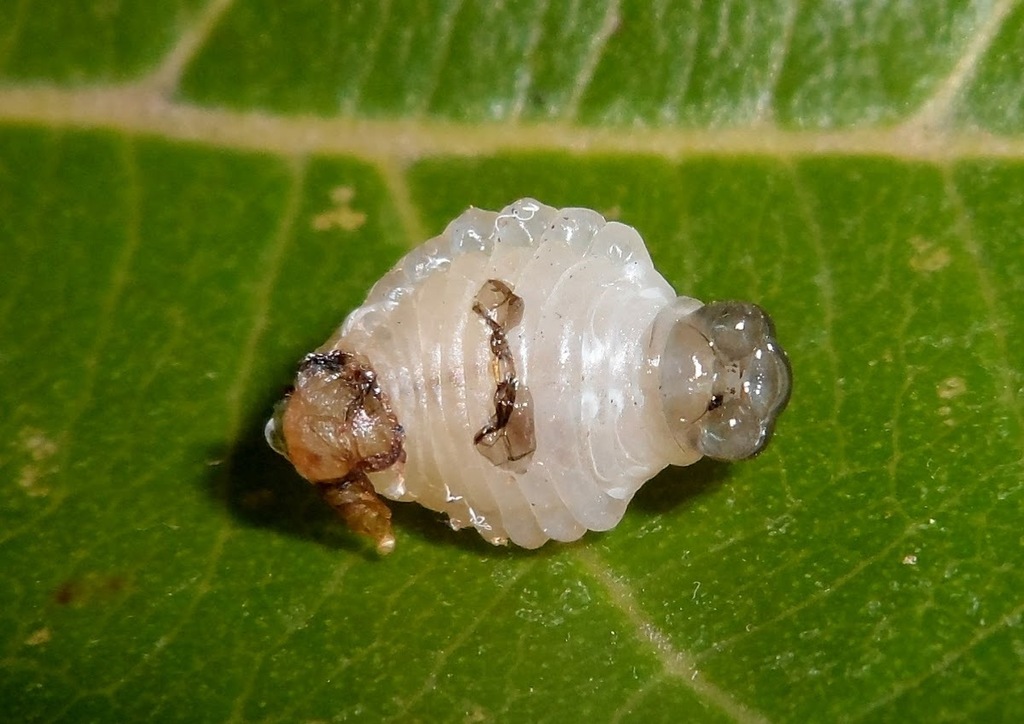
Fonte
http://www.extento.hawaii.edu/kbase/urban/site/
https://www.thoughtco.com/how-wasps-build-wasp-nests-1968103




Comentarios
Wonderful journal post!
@jonathan142 @humanbyweight
Diário maravilhoso!
😃
Great post, indeed! And wonderful photos of P. lanio.
Agregar un comentario